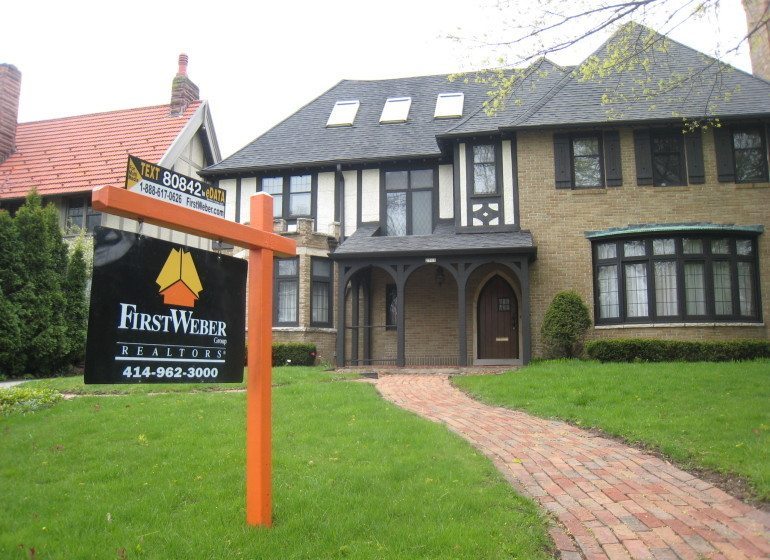The Milwaukee area now leads the nation in declining affordability for home ownership, according to the First American Real House Price Index.
The index measures the price changes of single-family properties throughout the U.S., adjusted for the impact of income and interest rate changes on consumer house-buying power over time.
The Milwaukee area’s housing affordability fell 17.9 percent in the last 12 months, which is being attributed to the low supply of homes listed for sale. That can lead to price increases. The median price for homes that were sold in southeastern Wisconsin during May rose to $182,750, a 4.4 percent increase over last year, according to the Wisconsin Realtors Association.
The inventory of existing homes for sale in the Milwaukee area has been tight for more than a year, with inventory (the time it would take to sell all of the homes on the market at a given time) hovering around four months. Six months of inventory is considered a balanced market with neither buyers nor sellers having an advantage. But when inventory is tight, it is a sellers’ market and home prices rise.

“While this is welcome news for home (sellers), the number of homes listed for sale is not meeting consumer demand and markets are getting tighter,” Mark Fleming, chief economist at First American, said in a media release. “As a result, affordability declined 11 percent (nationwide) on a year-over-year basis.”
Other metropolitan cities facing similar year-over-year price increases are Charlotte, N.C., up 17.4 percent; Seattle, 15.9 percent; Denver, 15.6 percent and San Jose, Calif., up 15.6 percent.
The First American Real House Price Index measures the price changes of single-family properties throughout the United States at national, state and metropolitan levels, serving as a measure of housing affordability.
Despite the monetary tightening policies of the Federal Reserve and a dip in the average rate for a 30-year, fixed-rate mortgage, the decline in real, purchasing power adjusted house prices between March and April was the largest month-over-month decline since July 2016, Fleming said.
For the fifth consecutive month, real house prices increased on a year-over-year basis in all the metropolitan areas tracked by First American, with two-thirds increasing by 10 percent or more, Fleming said.
While Milwaukee leads the nation in declining affordability, homes in Wisconsin as a whole are also becoming less affordable. The state is one of the five states with the greatest year-over-year increase in the Real House Price Increase with a 14.6 percent jump overall.
Vermont has the highest increase at 15.9 percent, followed by New York at 14.9 percent and then Wisconsin.
In May, the median home sale price was $174,500 in Wisconsin, a 5.8 percent increase over the same period last year, according to the Wisconsin Realtors Association.
Being able to afford a home in Milwaukee is not a new issue. A report released in February by real estate data site PropertyShark, found the area is one of nine in the country where single women cannot afford to buy a one-bedroom home.
As Milwaukee and many other metropolitan areas continue to grapple with the months-long trend of increasing home prices and tight inventory, the Federal Home Loan Bank of San Francisco announced Monday it has awarded $73.6 million in Affordable Housing Program grants.
Of that, $600,000 will be allocated to St. Anthony’s Apartments, a project being developed by Chicago-based Heartland Housing Inc., at 1004 N. 10th St. that will convert a former five-story corrections facility into a 60-unit apartment.
“In an unsettled financing environment, our Affordable Housing Program continues to be a reliable source of value-adding gap funding for projects that are successful in serving families and individuals facing an array of specific housing challenges,” Jim Yacenda, vice president and community investment officer at FHLBank San Francisco said in a media statement.
Read more economic data reports at the BizTracker page.